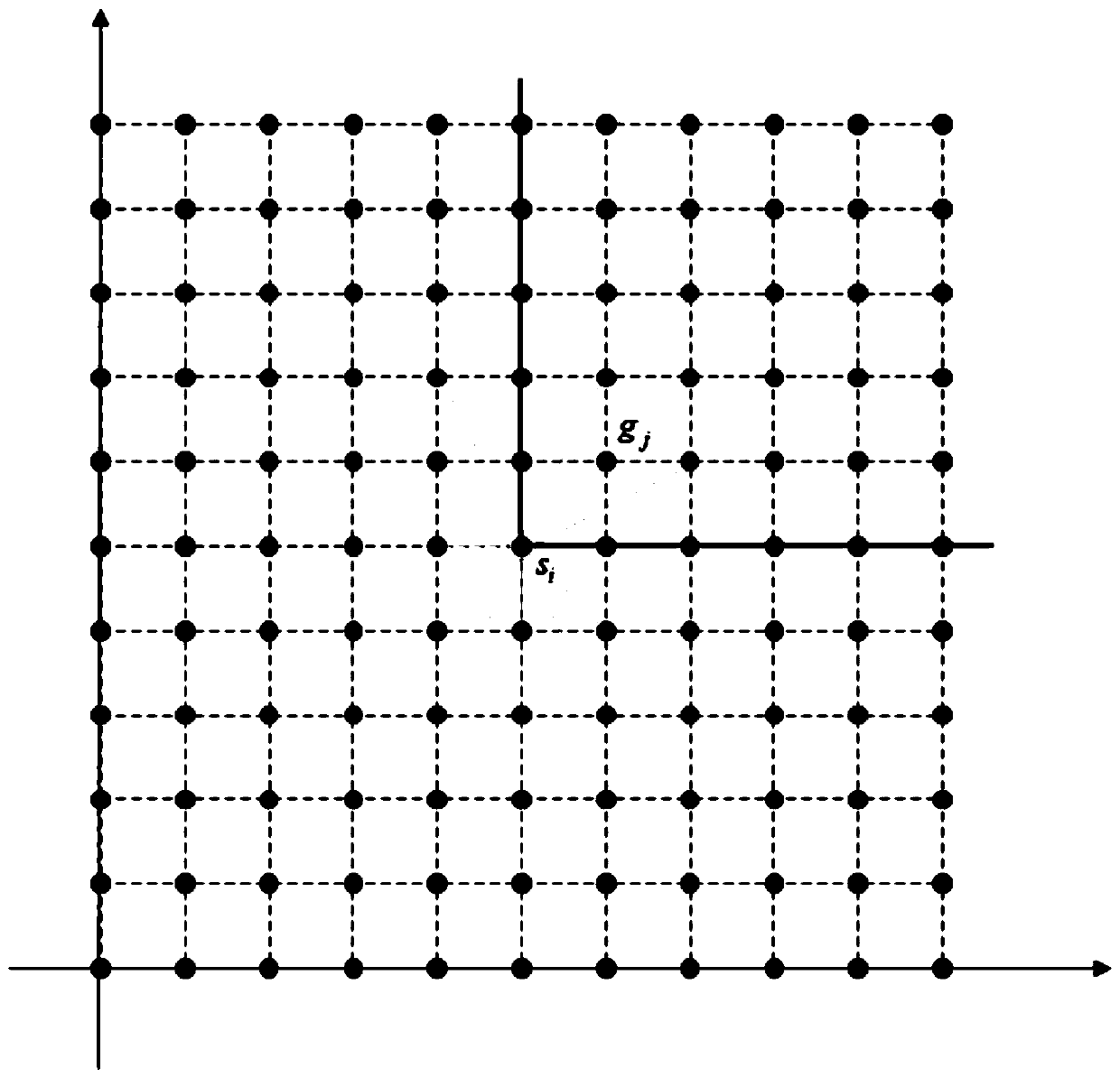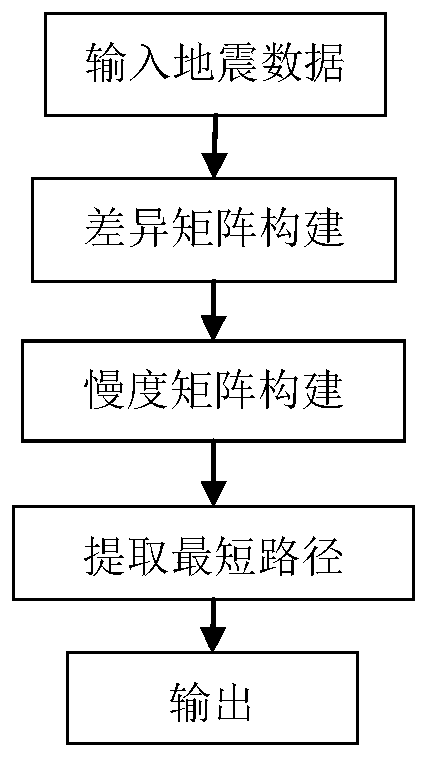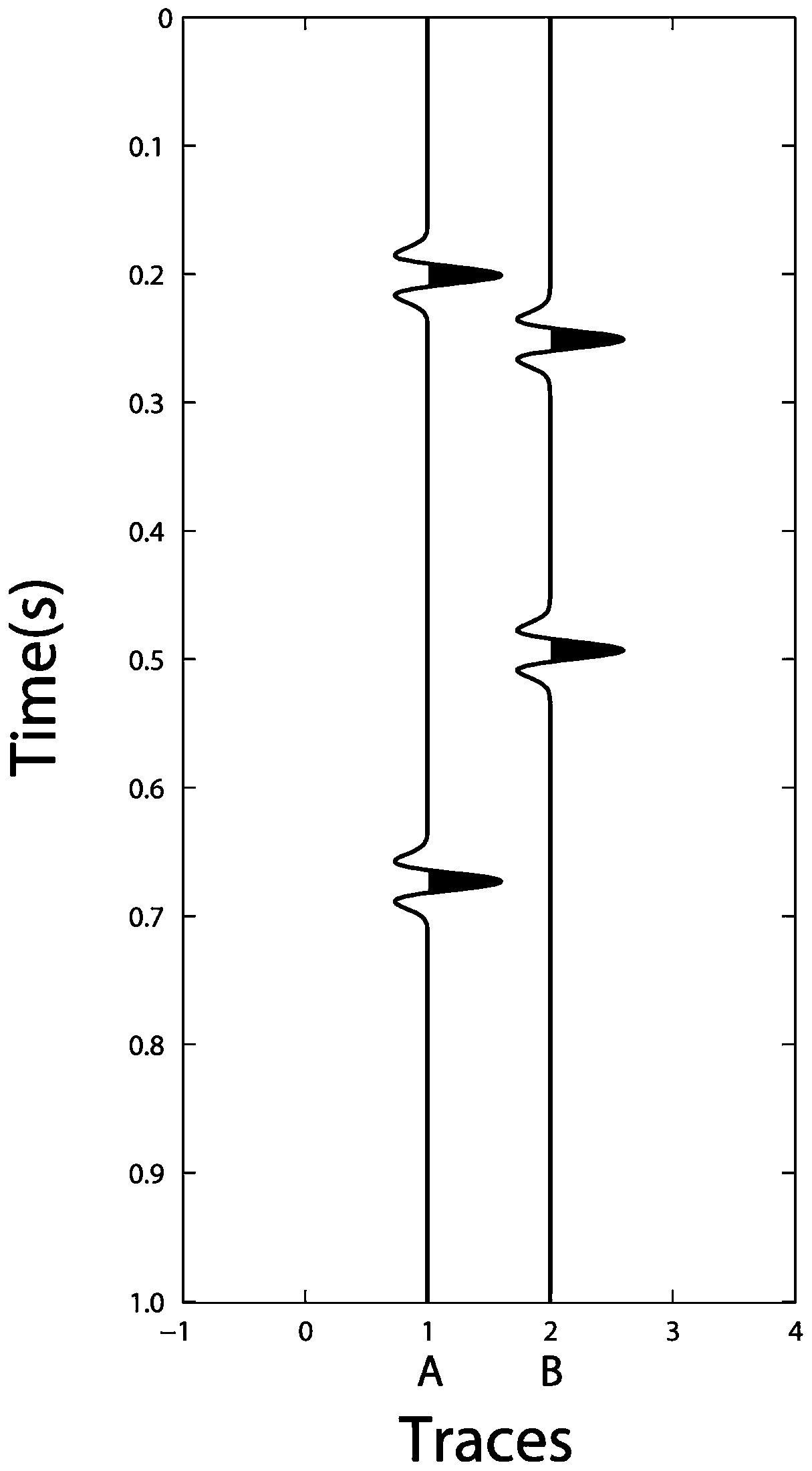Denoising method for seismic data signal based on variational principle
A technology based on seismic data and variational principles, applied in the field of petroleum exploration, can solve problems such as the inability to achieve the efficiency and stability of seismic signal measurement operations, susceptibility to noise, and unstable results, and achieve the shortest path robustness and wide application value , the effect of suppressing the interference of noise
- Summary
- Abstract
- Description
- Claims
- Application Information
AI Technical Summary
Problems solved by technology
Method used
Image
Examples
Embodiment 1
[0097] 1: Input two segments of seismic data (such as image 3 shown), where A on the left is the reference signal, and B on the right is the test signal.
[0098] 2: Construct difference matrix (such as Figure 4a ), and transform it into a slowness matrix (as Figure 4b shown).
[0099] 3: Extract the shortest path, (such as Figure 5a , Figure 5b shown), where the path calculated from the start node to the end node does not agree with the curve of the path obtained from the end node to the start node, extracting the boundary in the same path ( Figure 5a A-F six points), re-do the shortest path ray tracing, and finally get the shortest path such as Figure 5b shown.
[0100] 4: Apply the travel time shift of each sampling point corresponding to the obtained shortest path to the test signal to obtain an updated signal (such as Image 6 shown).
[0101] From the analysis, it can be found that both the backward time-shifted seismic wavelet and the forward time-shifted...
Embodiment 2
[0103] This method is applied to the optimal stacking and denoising process of actual pre-stack seismic data.
[0104] 1: First, the shot trace set is divided into several small areas, and in each small area, the reference trace is obtained by superimposing all the traces.
[0105] 2: In each small area, calculate the shortest path between all the seismic traces and the reference trace, obtain the time-shift disturbance, and obtain the updated seismic trace. The estimation process is the same as that of Experiment 1.
[0106] 3: Finally, the updated stacks are stacked in each region to achieve denoising of the pre-stack seismic data.
[0107] in Figure 7a is the pass set before processing, Figure 7b is the processed shot pass set. It can be seen that the original shot set contains more coherent noise, and the deep events are covered by the noise and cannot be identified. After processing, the noise is effectively removed, whether it is shallow or deep, the continuity of...
PUM
 Login to View More
Login to View More Abstract
Description
Claims
Application Information
 Login to View More
Login to View More - R&D
- Intellectual Property
- Life Sciences
- Materials
- Tech Scout
- Unparalleled Data Quality
- Higher Quality Content
- 60% Fewer Hallucinations
Browse by: Latest US Patents, China's latest patents, Technical Efficacy Thesaurus, Application Domain, Technology Topic, Popular Technical Reports.
© 2025 PatSnap. All rights reserved.Legal|Privacy policy|Modern Slavery Act Transparency Statement|Sitemap|About US| Contact US: help@patsnap.com



